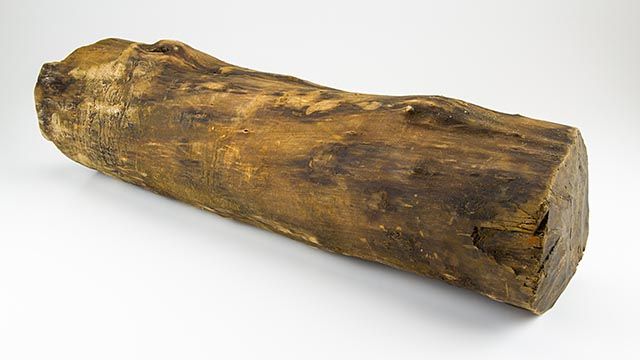
Boxwood (Palmwood), hauled from Greece by the straatvaarder.
Vast sums of money were earnt through coastal shipping in Europe in the seventeenth century. Diverse products were traded and transported, such as grain from the Baltic region, wood from Scandinavia, wine from France and oil from Greece.
Exclusive cargo
In approximately 1650, a ship known as a ‘straatvaarder’ perished on the Texel Roads. It had just returned from the subtropics, with great quantities of boxwood as deck cargo. This type of wood, also known as palmwood, is high quality hardwood which was used for luxury furniture making. Divers named the wreck the ‘Palmwood Wreck’ upon discovery due to this cargo. Wood was however not the only product being transported on the ship. Divers also found a unique collection of seventeenth century textiles and corresponding utensils in the wreck: everything had been preserved for years beneath the sand of the Wadden Sea.
Dutch pinas
The Palmwood Wreck was most likely once a pinas: a medium sized East Indiaman, used as warship and merchant ship in the 16th and 17th century. It was about 36 to 40 metres long. Due to its shape, the pinas could carry less cargo than a fluyt ship but was somewhat quicker and more easily manoeuvrable. A typical pinas could carry about 18 cannons and a crew of around 60-75 people. About 12 cannons have been observed or salvaged from the Palmwood Wreck and the seabed next to it. All in all, the construction of the ship suggests that it was of Dutch origin, equipped in the Netherlands and with sufficient armament to sail the Strait of Gibraltar. The cargo supports the suggestion that the ship once sailed on the Strait of Gibraltar: alongside the many Palmwood logs, diverse Mediterranean pottery and mastic gum from Greece has also been found.

